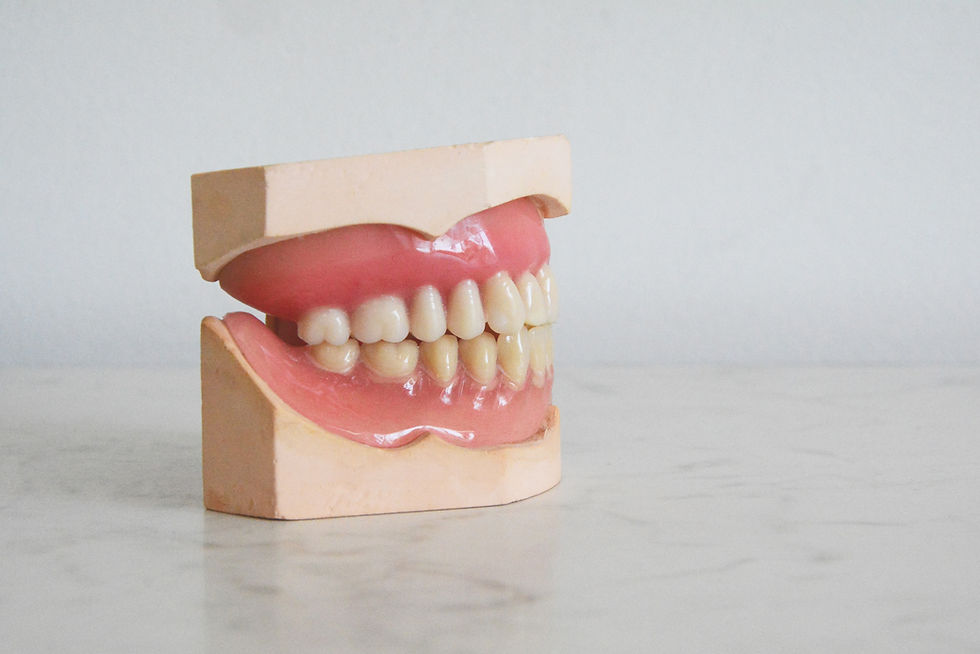Why does my jaw hurt?
- Marcia Campagna
- Feb 22, 2022
- 3 min read
Updated: Oct 17, 2023
Part 1: Masseter Muscle
At Best Speech Therapy, PLLC, we frequently work with people who complain of pain or discomfort of the jaw. There are a lot of reasons for orofacial pain such as Trigeminal Neuralgia, clenching, grinding, TMJ disorder (TMD), and more. The most common reason for facial pain is due to a muscle imbalance; many times this muscle pain is a result of bruxism or excessive clenching and grinding.
In this series of blogs, I want to focus on how the jaw muscles and the function of this muscles contribute to pain. In Part 2, we will focus on the temporalis muscle and how your mouth posture contributes to headache pain. In Part 3, we will focus on the pterygiod muscles and how the movement at the jaw joint (temporomandibular joint) contributes to TMJ pain. In Part 4, we will focus on how jaw work (chewing) is crucial for mouth, airway development and cognitive performance. Today I will focus on the masseter muscle, commonly known as the chewing muscle, located in the lower half of the face on each side near the ear. Many times we see people rubbing on the area near the ear as a way to massage the pain away.

The masseter muscle is considered one of the strongest muscles in the body based on weight. The masseter, along with the other jaw muscles working together, can close the teeth with a force of 200 lbs on the molars.
The jaw branch of the CN V, also known as the Trigeminal Nerve, controls the masseter muscle. Hence, some pain is neurological and will require a referral to neurologist.
The masseter is responsible for the following functions of the mouth:
Monitoring freeway space along with the Temporalis muscle.
Freeway space is the space between your teeth when you are not eating, drinking, or speaking. In other words, the space between your teeth during oral rest posture when your tongue is at the roof of your mouth and you are breathing through your nose.
Stabilizing the jaw and helping with graded jaw movement during feeding
Lifting and moving the jaw forward
Opening and Closing the jaw
Moving the jaw back
Helping in closing the lips
Clenching the teeth
Chewing food
Now that you have a little background regarding the masseter muscle, let's get back to that jaw pain...
Signs that you may have an orofacial myofunctional disorder characterized of a jaw symptoms:
Are the areas in your jaw region or near your ear swollen?
Do you find yourself excessively grinding or clenching?
Are you chewing gum excessively?
Do you feel increased tension in the jaw region or near the ear?
Do you have difficulty chewing your food?
Are you swallowing chunks of food or incompletely chewed foods?
Do you feel pain in the jaw region?
Do your teeth touch or close when your mouth is closed?
Do your dentures make your teeth touch or close when your mouth is closed?
Keep in mind that muscles are "sensitive to the rate at which a muscle stretches and to the extent a muscle stretches". (Mason, et al.) So jaw movement in the form of excessive grinding, clenching, or gum chewing can create a strained and/or overused masseter. Chewing on one side and not the other can also create a muscle imbalance - one underused masseter and the other one being overused.
Let's talk about teeth together postures or closed bite postures at rest...

Teeth together postures may result in muscle spasms, trauma to the teeth and supporting structures and pain in the TMJ (Temporomandibular Joint) region.
Clenching, grinding, excessive gum chewing, denture construction, and inappropriate oral rest posture can lead to Orofacial pain characterized by the above
Our orofacial myologists and speech pathologists improve functional mouth movements by targeting muscle imbalances.
We strive to improve your quality of life by assessing your jaw, lips, tongue movements and the functions of breathing, chewing/swallowing, and speaking.
Email info@Bestspeechtherapy.com to schedule your Orofacial Myofunctional evaluation today!
References:
Gatto, K. K. (2016). Understanding the orofacial complex: The Evolution of Dysfunction. Outskirts Press.
Mason, R. M., et al. (2020). The importance of the freeway space in orofacial myofunctional therapy. International Journal of Orofacial Myology and Myofunctional Therapy,46(1), 37-47.
Saccomanno, S., & Paskay, L. C. (2020). New trends in myofunctional therapy: Occlusion, muscles and posture. Edi-Ermes.
What is the strongest muscle in the human body? The Library of Congress. (n.d.). Retrieved February 22, 2022, from https://www.loc.gov/everyday-mysteries/biology-and-human-anatomy/item/what-is-the-strongest-muscle-in-the-human-body/

Comments